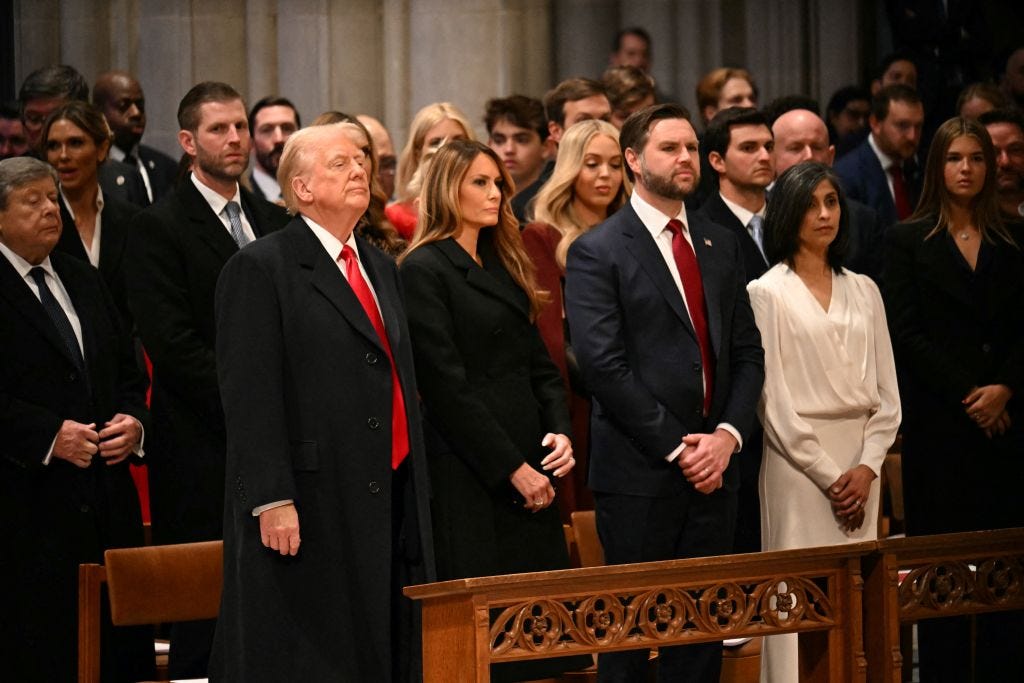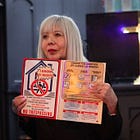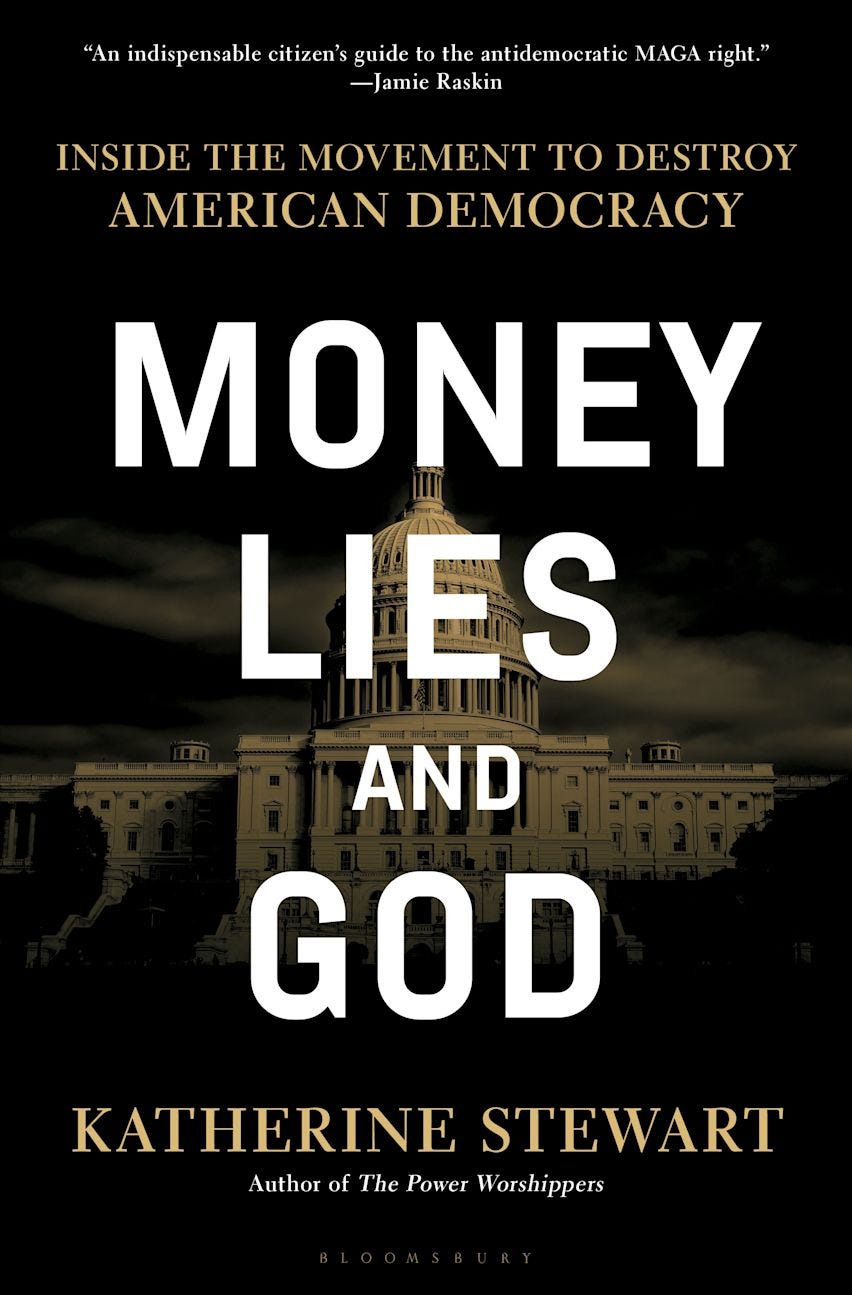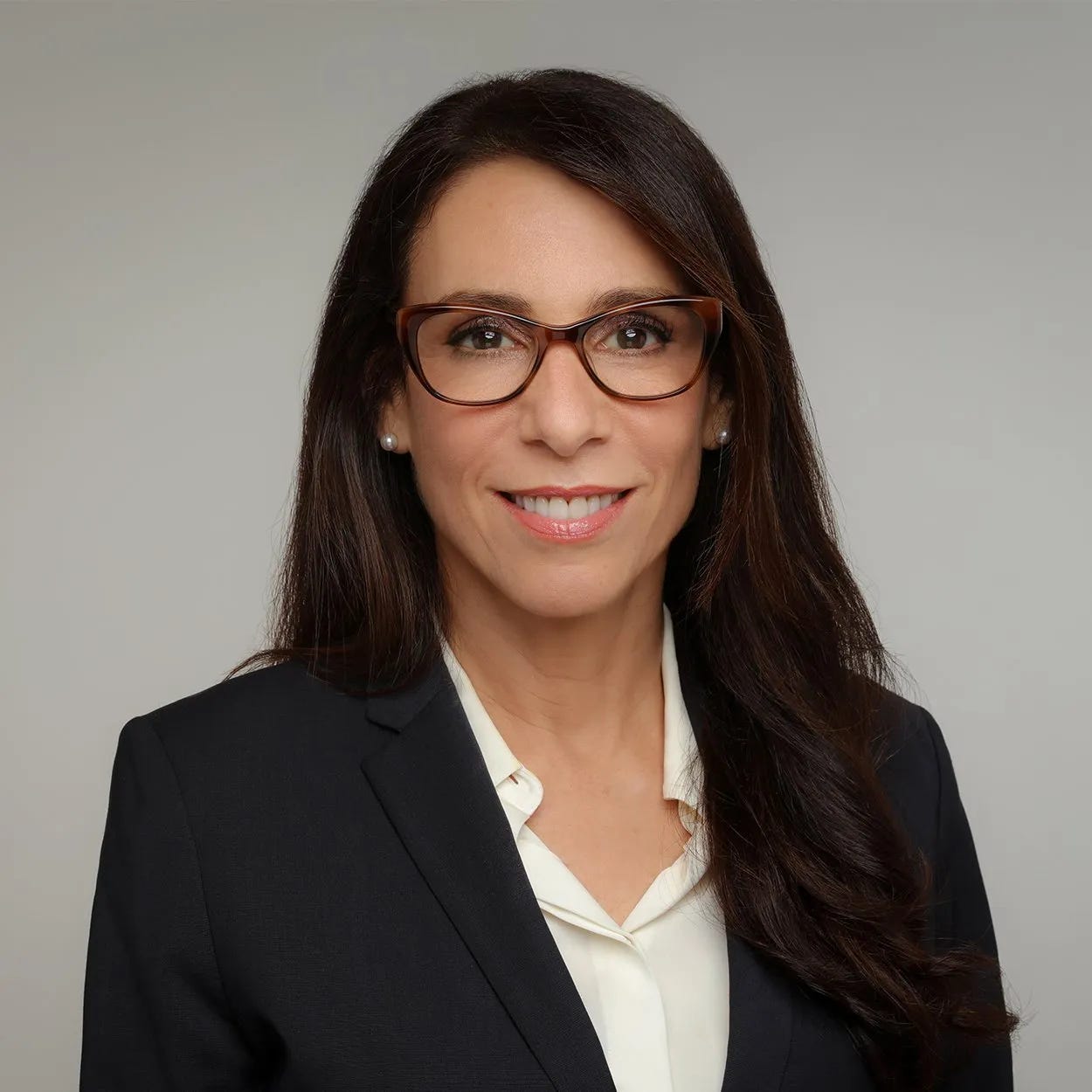ICYMI: Inside the theocrat-oligarch bromance
Journalist Katherine Stewart digs into the connection between Christian nationalism and American fascism
This week, Vice President JD Vance got into a very public theological dispute with Pope Francis which revealed the depths of the rift between the beliefs of the religious right and the doctrines of mainstream Christianity — and underscored how Christian nationalism has become a religion and political force all its own, threatening democracy in the United States and around the world.
Investigative journalist Katherine Stewart, an analyst of the religious right, American authoritarianism, and their deep connections, has spent the last 15 years digging into how Christian nationalists embraced a hierarchical, exclusionary religious vision and enabled the rise of Vance, Trump, and their oligarchic partners in fascism. She’s got a new book out, Money, Lies, and God: Inside the Movement to Destroy American Democracy, exploring the role of belief in turning Americans away from democracy and how reactionary forces built an “engine of unreason” that drove the authoritarian political movement that’s right now consolidating power in a coup.
Anya Kamenetz talked to Stewart about the evolution of Christian nationalism, the forces of reaction that drove so many Americans to reject democracy, how oligarchs took advantage of that backlash to change to turn working people to their cause, and why, even as a fascist regime takes power, she remains hopeful about democracy in the long term.
You say the new American fascism is “more a political pathology than a political program." What does this mean? Does this mean they aren't prepared to actually govern, in your opinion? Does no one benefit from this movement? Isn’t it serving the interests of oligarchs?
Authoritarianism — or, to be less polite, fascism — is better understood as something that happens to a political system, rather than something that starts off as a full-fledged political program that receives majority support. So when I suggest that the antidemocratic movement is more pathology than program, what I mean is that it has a number of separate pieces and interest groups, sometimes working for different aims, but that nevertheless end up reinforcing one another. They are rowing in the same boat, in a sense, but the outcome of their collective actions can be unpredictable and lead to consequences that many of the rank-and-file, who are lending support to the effort, neither anticipate nor want.
To your point about the oligarchs, yes, they are one faction and they are pursuing what they believe to be in their interests. In the short term, many loyalist oligarchs will be rewarded with policies that are beneficial to their pocketbooks. But we should keep two points in mind: First, these oligarchs depend on the support of a huge part of the population that will not benefit from their initiatives and, if they understood properly what was going on, wouldn’t support it. And secondly, these oligarchs are not nearly as smart as they think they are. By investing in the corruption and dismantling of democracy, they may get some short-term payouts — but in the long run are making life worse for themselves or their children or grandchildren, if they have any.
A good example of the pathological aspect of the movement is its incredibly performative nature. A disproportionate number of the initiatives or issues that draw its attention have almost nothing to do with constructive policy, and everything to do with performance — with dominance displays, the ritual punishment of political enemies, the scapegoating of targets, the acting out of grievances or resentments. These are examples of behaviors that are not goal-directed, but reactive.
How did you arrive at the phrase "reactionary nihilism" and what does it mean?
I think of nihilism as a description of those whose fundamental aim is to destroy rather than to create, and who, by their actions rather than any declaration, deny that there is any real truth or value in this world. By “reactionary” I mean that rather than advance or progress toward a better state, this movement emphasizes a return to some imaginary version of an allegedly better past — a past that includes elements of a regressive social order, such as gender hierarchy, the suppression of certain forms of speech, and attacks on the religious freedom of those who fail to conform among other features.
I put those words together to describe the anti-democratic reaction. To be sure, not everybody who wants to go back to the good old days is a nihilist. But the ones who believe that a democratic political system and its ideals and institutions are so bad they need to be destroyed — and, at the same time, exalt a completely fictitious and unrealistic fantasy about the golden age of yore — I think these people count as nihilists. Their vision is not based on reality; it’s retreating into a fantasy that is projected onto the past.
I know you embarked down this road of reporting with The Good News Club because it came to your doorstep in California. What are your thoughts about why education, especially in K-12 schools, looms so large as targets of this movement?
Public schools have been flashpoints for the culture wars for decades. When I started researching this movement sixteen years ago, it was clear that the movement was deeply hostile to the institution of public education precisely because it is meant to be nonsectarian, welcoming all families regardless of their religious background and neither affirming nor denigrating any particular religious viewpoint. Jerry Falwell made the agenda clear in 1979 when he said, “I hope to see the day when there are no more public schools, churches will have taken them over and Christians will be running them.” Other powerful religious right leaders, such as D. James Kennedy, whose ministry received millions from the family of Trump’s former education secretary Betsy DeVos, said schools were “atheistic” and “amoral” and were brainwashing children in “Godless secularism.”
The destruction of public education as we know it has been a longstanding aim. However, the religious right activists and, eventually, the privatizers with whom they started to work hand-in-hand, were, even a decade ago, more discreet about it. Only a few people at the margins were out there admitting that the end game was to starve the “beast” of public education and redirect the flow of taxpayer cash to private and religious/ideologically right-wing schools. But now they are quite up-front about it.
Superficially it looks like they are trying to achieve this aim by forcing their initiatives and programming into the public schools. That’s the apparent motivation of the laws that mandate the Ten Commandments be displayed in every public school classroom, or the recent law in Texas that offers to pay schools to teach elementary-age children a sectarian Christian curriculum, or the Louisiana and Oklahoma rules imposing the Bible in schools. But the expansion of voucher initiatives is just the start; the movement and its right-wing legal apparatus is presently mounting a court case that would allow for publicly funded charter schools that are explicitly religious. The fundamental goal is to create a national network of publicly financed religious schools that explicitly favor conservative forms of religion.
Movement leaders have undermined public education at every turn, igniting needless conflicts and panics over “critical race theory” and the like in order to foster mistrust in public schools and pave the way for privatization. The division and conflict these initiatives promote in diverse school communities is not an unintended consequence of their activity; it is precisely the point. The desired end state is a system where taxpayers either directly fund religious schools, or supply parents with vouchers, and then parents use those vouchers to funnel money into religious schools. Speaking rather cynically, it’s a two-fer; it promises to be very profitable for the religiously motivated entrepreneurs involved, and at the same time it is intended to help build a constituency for Christian nationalist politics.
You give this anatomy of impulses that make up this movement: catastrophism; a persecution complex; identitarianism; and an authoritarian reflex. Can you give examples of how each of them show up uniquely in this movement?







